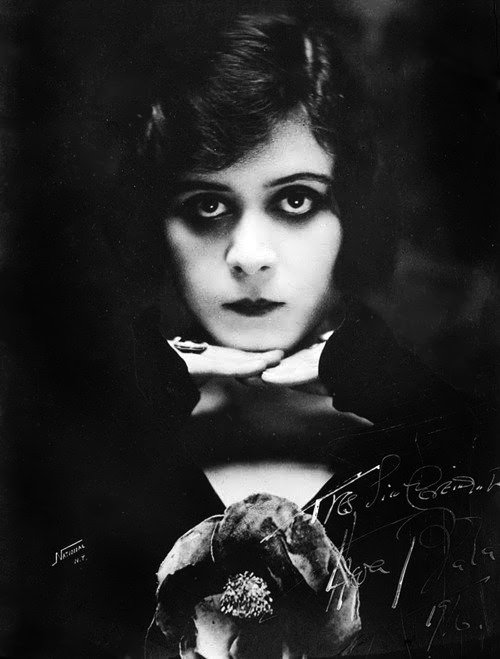




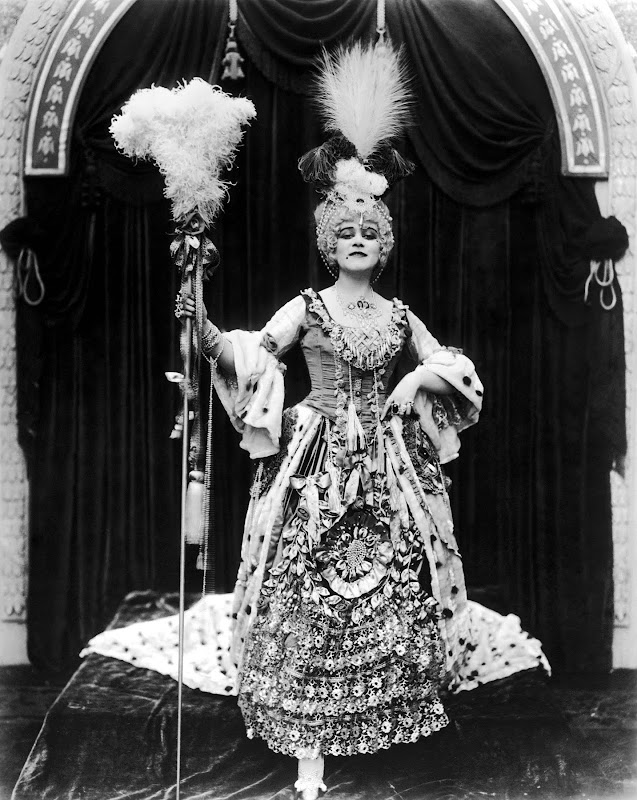


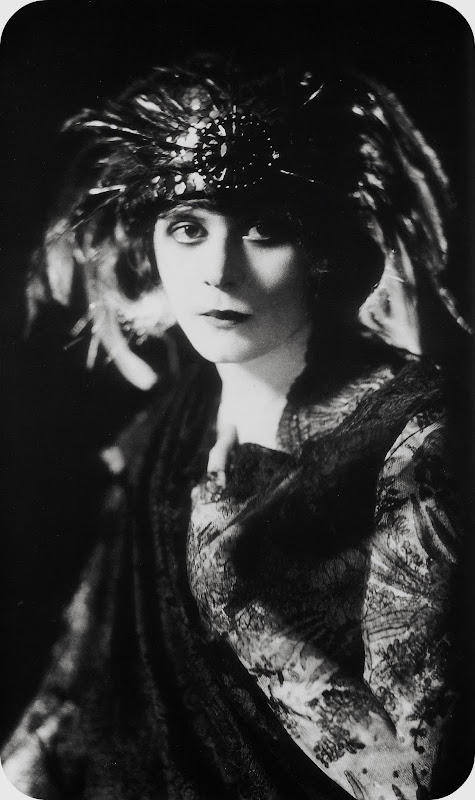

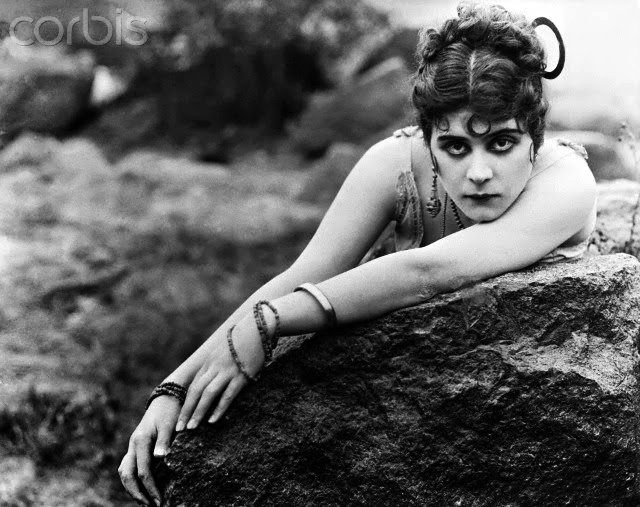
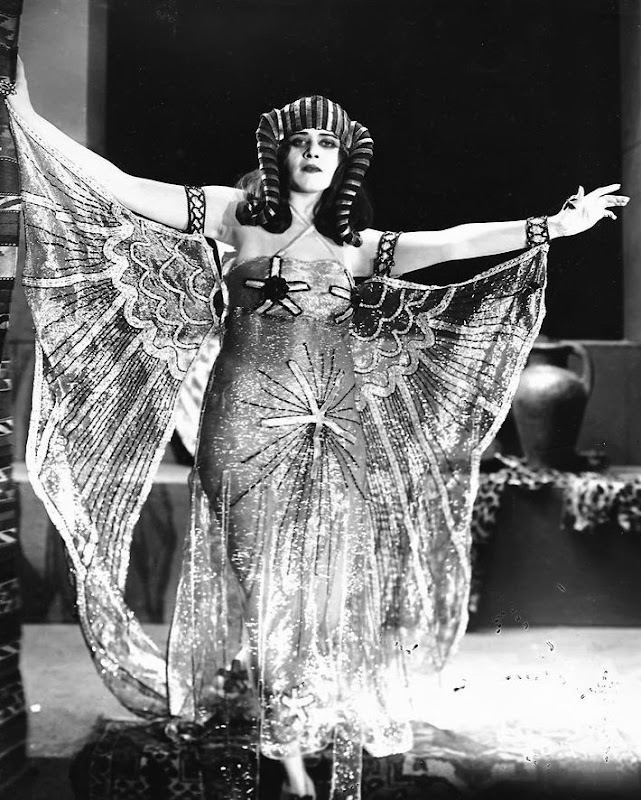
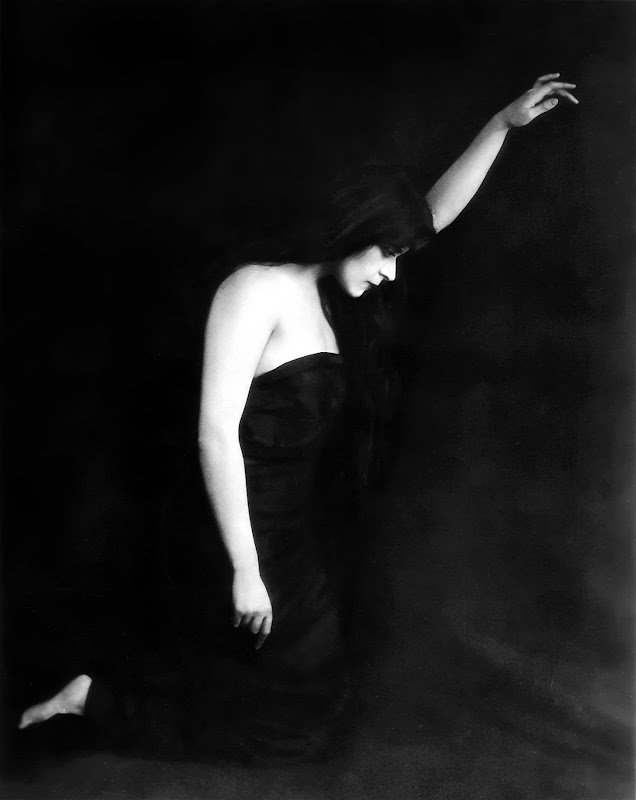
On The Hairpin website, Anne Helen Petersen writes:
Theodosia Goodman grew up in Cincinnati, the child of middle-class Jewish immigrants. Her father was a tailor; her mother kept house. She went to high school, she went to two years of college. She was a middling actress with middling looks, age 30, stuck in the Yiddish theater circuit, with a bit role in the occasional film. She was wholly unremarkable - one of hundreds of women working toward the same end."You say I have the most wicked face of any woman. You say my hair is like the serpent locks of Medusa, that my eyes have the cruel cunning of Borgia, that my mouth is the mouth of the sinister scheming Delilah, that my hands are like the talons of a Circe or the blood-bathing Elizabeth Bathory. And then you ask me of my soul - you wish to know if it is reflected in my face."
And then, in 1915, totally out of nowhere, she became THE BIGGEST SEX SYMBOL IN THE WORLD. As the star of A Fool There Was, she embodied the cinematic “vamp” - the evil, predatory woman who seduces a man with her dark ways, sucks him dry, and leaves him for ruin.
Her name was no longer Theodosia Goodman, but Theda Bara - an anagram, naturally, for “Arab Death.” Her mother was a French actress, her father was an Italian sculptor, yet she had been born “in the shadow of the Sphinx.” She "dabbled in the Occult"; she "communed with dark spirits". She "had been reincarnated several times" and lunched on lettuce and raw beef... Offscreen, Bara was her cinematic character made flesh: an alluring, vampish creature, occupying the liminal space between this world and the next. Put differently, Bara was the most blatantly absurd and exquisite of the silent-era studios' creations.
Theda Bara was a magnificent creature indeed, whose influence was not only felt in the visual stylings of the actresses who immediately succeeded her (such as yesterday's "exhibit" Clara Bow, with whom Theodosia shares a birthday, and the exotic Pola Negri), but lasts even to this day. You only have to look at pictures of Nina Hagen or Siouxsie Sioux in their prime, or Siobhan Fahey in Shakespear's Sister to see it - and "The Vamp" as a symbol of seductive female power is still a recurring theme in the visual arts today.
Yet Miss Bara's movie career was only a brief one - she appeared in 44 films, the first in 1914, but her career was ostensibly over in 1921 when her contract at 20th Century Fox was cancelled. Most of her films were subsequently lost in a fire, so there is very little cinematic evidence of her impact on audiences. Everything about her mystique is preserved in photographs and stills. Apparently in 1949 there was a rumour about a movie of Bara's life, starring Betty Hutton, but the project never materialized. She died of cancer, in relative obscurity, at the age of 69.
There can never be another Theda Bara.
Theda Bara (29th July 1885 – 7th April 1955)

A beautiful collection of pictures!
ReplyDeleteIt's how I prefer to dress when lounging around the house... Jx
DeleteDen mest kjente vampen var Asta Nielsen fra Danmark. Den forste superstjernen.
ReplyDeleteI forste verdenskrig var hun damen som soldatene dromte om. *OsloSson
I need to investigate Asta Nielsen, methinks. Jx
Delete